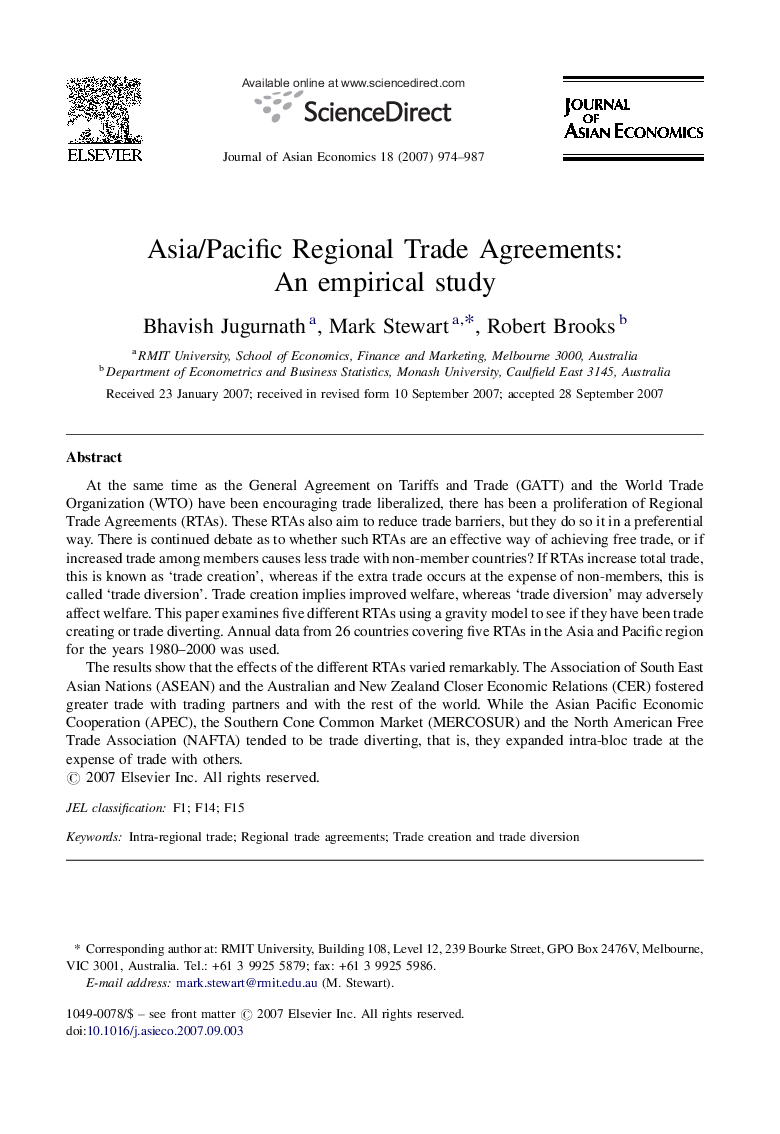| Article ID | Journal | Published Year | Pages | File Type |
|---|---|---|---|---|
| 5087879 | Journal of Asian Economics | 2007 | 14 Pages |
At the same time as the General Agreement on Tariffs and Trade (GATT) and the World Trade Organization (WTO) have been encouraging trade liberalized, there has been a proliferation of Regional Trade Agreements (RTAs). These RTAs also aim to reduce trade barriers, but they do so it in a preferential way. There is continued debate as to whether such RTAs are an effective way of achieving free trade, or if increased trade among members causes less trade with non-member countries? If RTAs increase total trade, this is known as 'trade creation', whereas if the extra trade occurs at the expense of non-members, this is called 'trade diversion'. Trade creation implies improved welfare, whereas 'trade diversion' may adversely affect welfare. This paper examines five different RTAs using a gravity model to see if they have been trade creating or trade diverting. Annual data from 26 countries covering five RTAs in the Asia and Pacific region for the years 1980-2000 was used.The results show that the effects of the different RTAs varied remarkably. The Association of South East Asian Nations (ASEAN) and the Australian and New Zealand Closer Economic Relations (CER) fostered greater trade with trading partners and with the rest of the world. While the Asian Pacific Economic Cooperation (APEC), the Southern Cone Common Market (MERCOSUR) and the North American Free Trade Association (NAFTA) tended to be trade diverting, that is, they expanded intra-bloc trade at the expense of trade with others.
